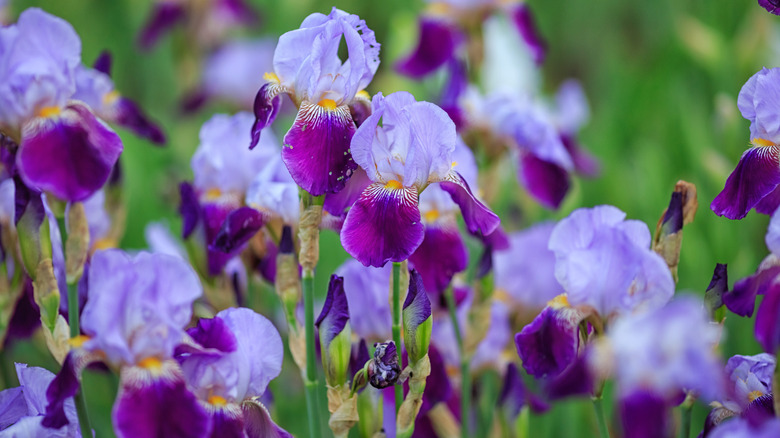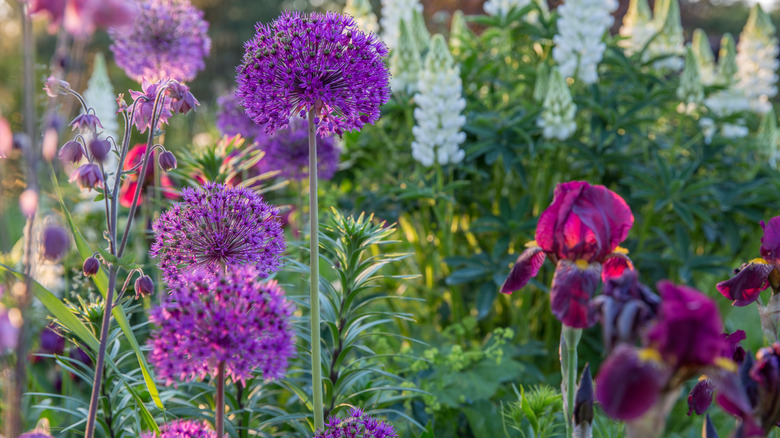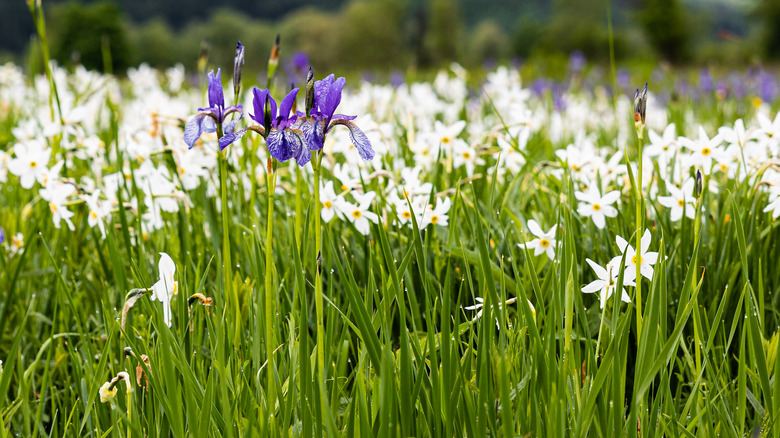The Flowering Plant You Should Be Growing Alongside Iris Bulbs This Spring
Native to Asia and Europe, irises flourish in hot summer weather. These theatrical flowers attract many pollinators, including hummingbirds and butterflies. With more than 250 species, irises grow from rhizomes rather than seeds, tubers, or bulbs. Rhizomes extend horizontally under the soil, growing nodes into roots and shoots into new plants. Irises are perennial plants, and their rhizomes help them survive freezing cold temperatures and other unfavorable conditions. By providing them with nutrients and energy, rhizomes allow them to return year after year.
Companion planting is a great way to utilize your garden space and improve soil health. When companion planting with irises in your garden, the most important thing to consider is their rhizome system. If they get covered by another plant, they will suffer. Iris rhizomes that are also shaded or overcrowded will compete for nutrients and sunlight and respond by not blooming. Look for plants with little foliage or allow lots of sunlight to penetrate the soil. Also, look for companion plants that share similar sunlight and soil requirements. One plant that stands out among the rest for iris companion plants is the ornamental onion: alliums.
What can I plant with iris bulbs?
Alliums are easy to grow, do great with irises, like the same conditions, and don't have dense foliage. Both irises and alliums love sunny, well-drained locations and grow well in the same USDA Hardiness Zones. Alliums also come in various heights and flower sizes and have minimal foliage, so they won't overpower, shade, or crowd the irises. You can find allium bulbs online at American Meadows for $9. This variety of allium, Purple Sensation, produces 4-inch globe flowers in late spring and early summer.
Succession planting with other types of flowers is another method to try. This type of planting involves growing flowers in the same area that bloom and grow at different times. The great thing about succession planting is that it gives you various types of blossoms throughout the year, before and after the irises flower. Succession plants for irises include phlox, daylilies, rudbeckia, peonies, foxglove, delphinium, and salvia. Each of these plants prefers conditions similar to those of irises, including full sun and the same types of soil.
Can irises be planted together with other spring bulbs?
If you want to add some interest to your iris bed, you can add early spring bloomers like daffodils, crocuses, and tulips. These flowers give you a pop of color and varying textures and heights until your irises bloom. Another great thing about these spring flowers is their ability to attract pollinators. They provide early sources of nectar for emerging bees in early spring. Some plants can negatively interact with each other. But planting these spring bloomers with your irises and alliums won't affect one another.
Although it may seem counterintuitive, if you want to plant irises, you can do so in September or October. Temperatures are still warm enough at night, giving them time to establish before cold temperatures set in. You'll also want to plant your alliums, daffodils, crocuses, and tulips in the fall, too. Combining succession planting and companion planting allows you to create a kaleidoscope of colors and textures that effectively utilizes your garden space. Grow alliums with your irises this spring, attract pollinators, and give your garden a classic, cottage-core look.


